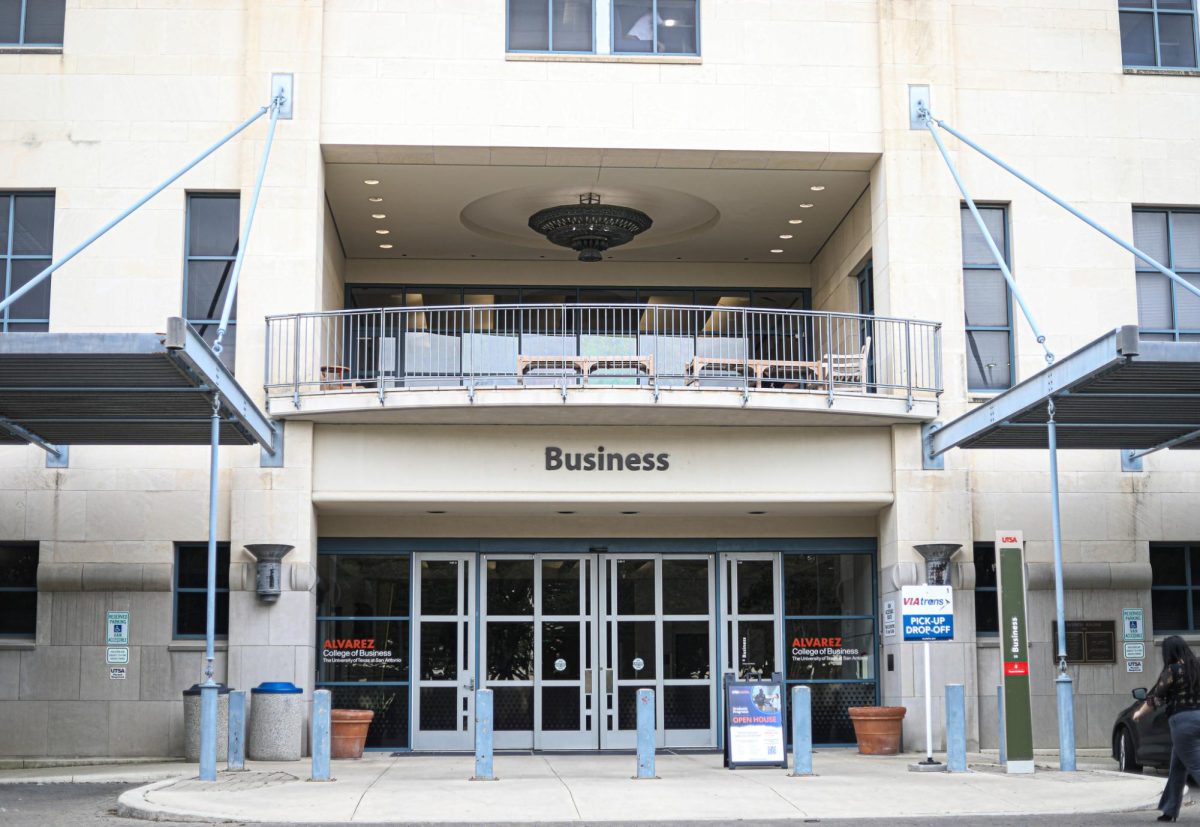
Robert Pistocchi/ The Paisano
San Antonio ordinance 255, a new distracted driving law which prohibits cell phone use while driving, is effective as of Jan. 1. According to Ordinance 255, drivers must use a hands free device, such as Bluetooth, if they want to communicate using a mobile network.
An individual using a “hand-held mobile communication device” — any device intended to receive and communicate via voice, text or picture through Internet or electronic methods — while driving is in violation of the law and is subject to a fine up to two hundred dollars. Furthermore, the law is not limited to only talking and texting. San Antonio drivers cannot read or view text messages, pictures nor use any other phone function.
“Driving is not the time to use the phone. We should be concentrating on the road and your surroundings and what’s happening on the roads,” said UTSA Police Captain Douglas Sonengo. “Every second you don’t (concentrate) it raises your chances of an accident.”
The ordinance, however, contains certain exceptions that warrant cellphone use while operating a motor vehicle. Drivers are allowed to dial numbers and end. Phone use is also permitted if the vehicle is stopped and out of roadway lanes. However, using a phone’s navigation system is acceptable if the phone is attached to the vehicle as well as car navigation systems. If in an emergency situation, drivers are allowed to use their phone to alert officials or if they are in danger.
“You can simply put your phone on speakerphone, get it on the console, get it on your lap, and it’s now a hands-free device so you’re in compliance with the ordinance,” said Sgt. Salazar.
According to the Texas Department of Transportation (TXDOT), Bexar County had 34,858 total crashes in 2013 ,with distracted driving being the leading cause at 20,871. Despite safety precautions, there is no certainty the new law will reduce traffic accidents. Although hands free devices may increase safety, they do not ensure that a driver will be more focused.
UTSA adjunct professor Alan Ashworth explained that attention is a “limited resource” that selects how much effort is afforded to each task. When people drive and talk on the phone, attention is diverted from concentrating on driving safely and instead focused on the conversation, causing driving performance to decrease.
“Everyone is capable of multitasking. We do it all the time in many contexts,” said Ashworth. “The real question is ‘How well can a person multitask in a specific context, in this case driving while talking on a mobile phone?’ The answer is ‘Not well at all.’”
According to a study from the University of Utah at Salt Lake City, “impairments associated with cell phone drivers may be as great as those commonly observed with intoxicated drivers.” Similarly, The New England Journal of Medicine’s research demonstrated that cell phone use while driving increased the risk of having an accident four fold. Further, The National Safety Council reported that talking on hands free devices is still as dangerous as talking on a hand held device.
“Research has consistently replicated the fact that driving while talking on a mobile phone is as dangerous as driving while legally drunk. If this law is enforced, it will significantly reduce traffic accidents and fatalities in San Antonio,” said Ashworth. “Less experienced drivers are at much more risk than experienced drivers. And that risk is not just to themselves, it is to all the other drivers on the road.”











